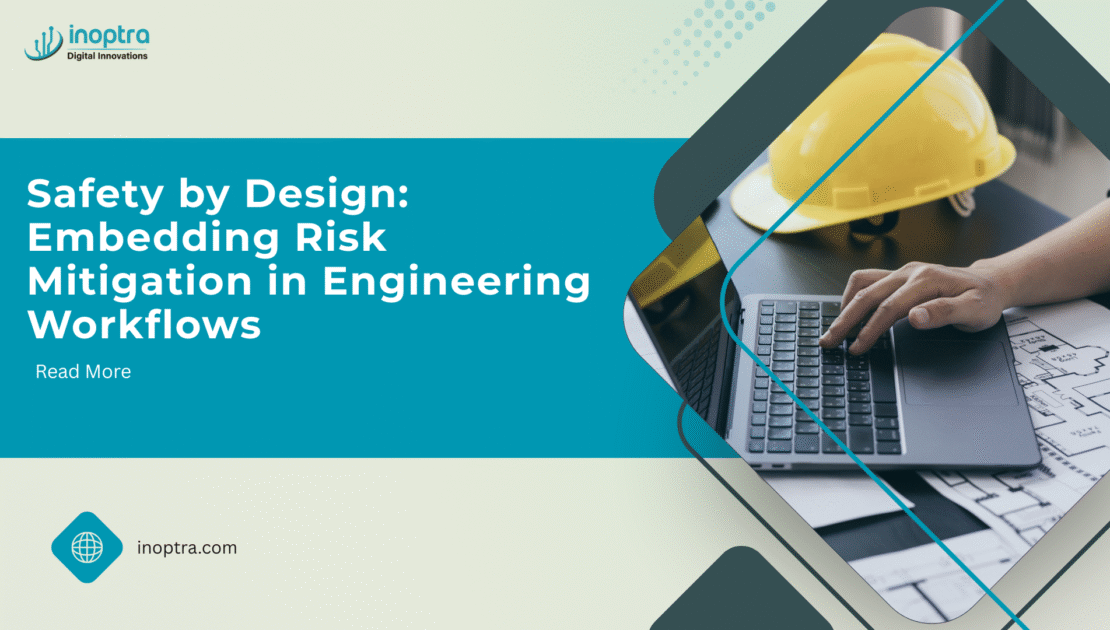What’s in the blog:
The concept of “Safety by Design” has emerged as a cornerstone of modern engineering, emphasizing the integration of risk mitigation strategies from the earliest stages of project development. With the rise of advanced modelling and simulation tools, engineers now have the ability to foresee, analyse, and eliminate potential hazards before a single shovel hits the ground.
The Shift Toward Proactive Safety
Traditional safety protocols often relied on post-design audits and field inspections, which, while valuable, left room for costly oversights. Safety by Design flips this paradigm by embedding safety considerations directly into the engineering workflow. This approach not only reduces the likelihood of accidents but also enhances project efficiency, regulatory compliance, and stakeholder confidence.

Model-Based Safety Analysis (MBSA)
At the heart of this transformation is Model-Based Safety Analysis (MBSA)—a methodology that uses digital models to simulate and assess system behaviour under various conditions. MBSA enables engineers to visualize complex interactions, identify failure points, and test mitigation strategies in a virtual environment.
Key platforms supporting MBSA include:
- SysML with MagicDraw: A systems modelling language used to create unified models that integrate safety requirements with system architecture.
- MADe (Maintenance Aware Design environment): MADe simulates fault propagation and validates hazard controls under failure conditions.
- Simulink and MATLAB: Widely used for dynamic system modelling and control logic validation, particularly in aerospace and automotive sectors.
These tools allow for real-time evaluation of design changes, ensuring that safety assessments remain relevant as projects evolve.
Simulation Tools for Hazard Prediction
Simulation technologies have become indispensable for predicting and mitigating risks in complex environments. Some of the most impactful tools include:
- ANSYS Fluent and Mechanical: Used for thermal, structural, and fluid dynamics simulations to assess stress points and failure risks.
- Fluidyn-PANACHE and Fluidyn-VENTEX: Specialized in consequence modelling for toxic gas dispersion, explosion scenarios, and fire propagation in industrial settings.
- Autodesk CFD and Revit: Enable building information modelling (BIM) and airflow simulations to optimize safety in architectural and construction projects.
These platforms support both qualitative and quantitative risk assessments, helping teams make informed decisions about material selection, structural integrity, and emergency response planning.
Digital Twins and Predictive Analytics
The integration of Digital Twin technology—virtual replicas of physical assets—has revolutionized safety planning. By mirroring real-world conditions, digital twins allow engineers to simulate operational scenarios, monitor system health, and predict failures before they occur.
Coupled with predictive analytics, these models can analyze historical data and sensor inputs to forecast risk trends. For example, in marine engineering, digital twins can simulate wave impact and structural fatigue over time, enabling reinforcement strategies.
Interdisciplinary Collaboration and Data Interoperability
Safety by Design thrives on collaboration. Modern engineering workflows demand seamless communication across disciplines—civil, mechanical, electrical, and environmental. Tools like PLM (Product Lifecycle Management) systems and BIM 360 facilitate data interoperability, ensuring that safety insights are shared and acted upon across the project lifecycle.
Moreover, cloud-based platforms such as Bentley Open Buildings and Trimble Connect allow real-time updates and remote access to safety models, fostering transparency and accountability among stakeholders.
Regulatory Alignment and Compliance
Embedding safety into design workflows also streamlines compliance with industry standards such as:
- ISO 31000 (Risk Management)
- ISO 45001 (Occupational Health and Safety)
- NFPA codes (Fire Protection)
- OSHA guidelines (Construction Safety)
By integrating these frameworks into modelling tools, engineers can automatically validate designs against regulatory benchmarks, reducing the risk of non-compliance and project delays.
Engineering with Foresight
Safety by Design is not just a methodology—it’s a mindset. By leveraging advanced modelling and simulation tools, engineering teams can transform risk management from a reactive chore into a strategic advantage. Whether it’s predicting gas dispersion in a refinery or simulating structural loads in a bridge, the ability to foresee and mitigate hazards before construction begins is redefining what it means to build responsibly.
As InOpTra positions itself as a global partner in engineering innovation, embracing Safety by Design will be key to delivering transformative solutions that are not only groundbreaking—but also grounded in safety.
The InOpTra Approach
InOpTra stands apart through its unwavering commitment to engineering excellence, safety innovation, and client-centric collaboration. Our approach is rooted in integrating advanced modelling and simulation tools directly into the design phase, ensuring that risk mitigation is not an afterthought but a foundational principle. By leveraging technologies like Digital Twin environments, MBSA platforms, and real-time BIM coordination, we empower teams to visualize, test, and refine systems under realistic conditions—long before construction begins.
What truly differentiates InOpTra is our ability to unify cross-disciplinary expertise with cutting-edge digital workflows. Whether it’s fluid dynamics, structural integrity, or environmental impact, our engineers work within a seamless ecosystem of interoperable tools, enabling faster decision-making and more resilient designs. We don’t just meet regulatory standards—we embed them into our processes, ensuring compliance is automatic and auditable.
Clients trust InOpTra because we deliver more than solutions—we deliver foresight. Our proactive safety strategies, transparent communication, and agile project management foster confidence at every stage. From concept to commissioning, we remain deeply invested in our partners’ success, transforming complex challenges into safe, sustainable outcomes. With InOpTra, safety isn’t a checkbox—it’s a culture. And that culture drives everything we build.


